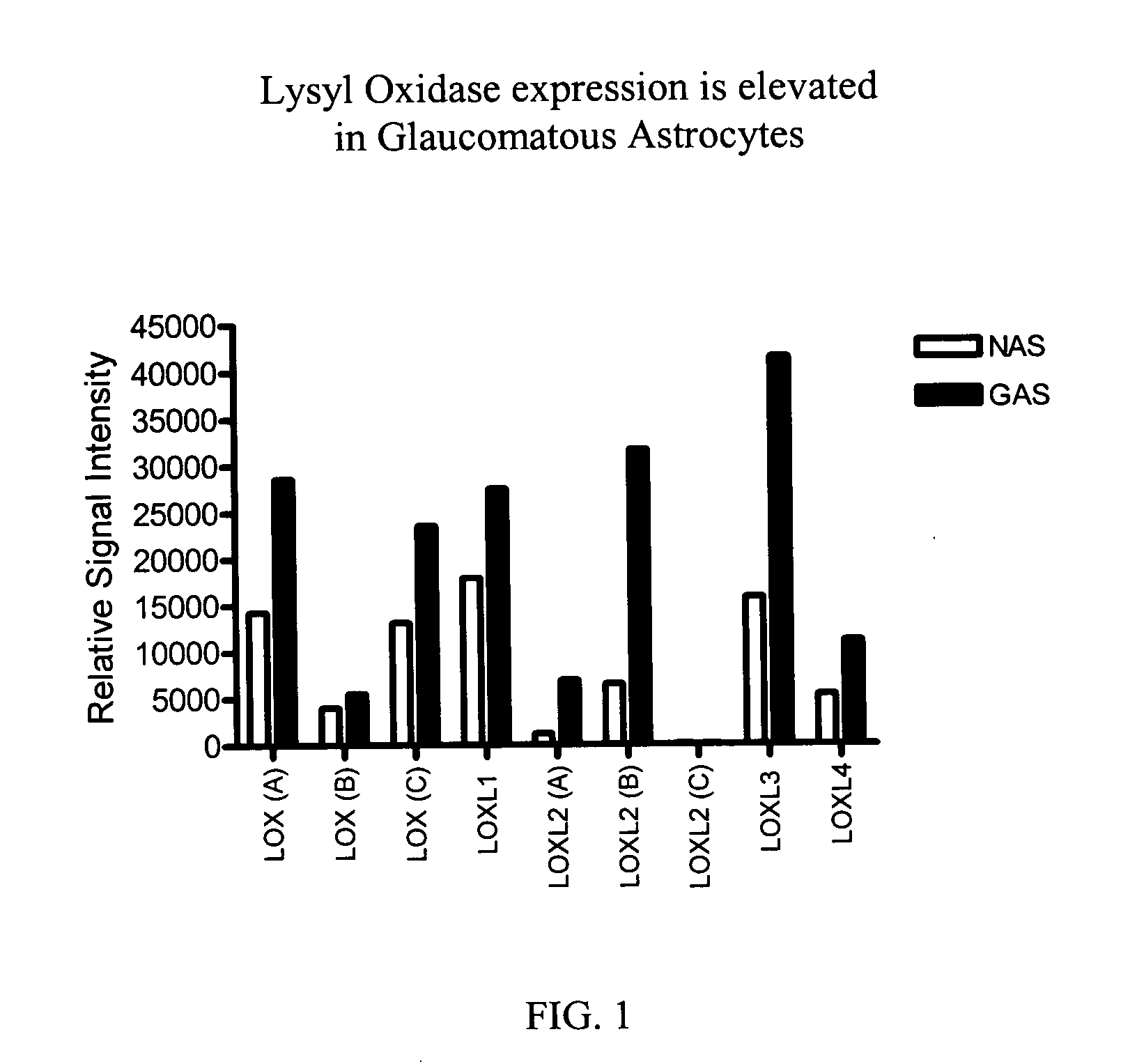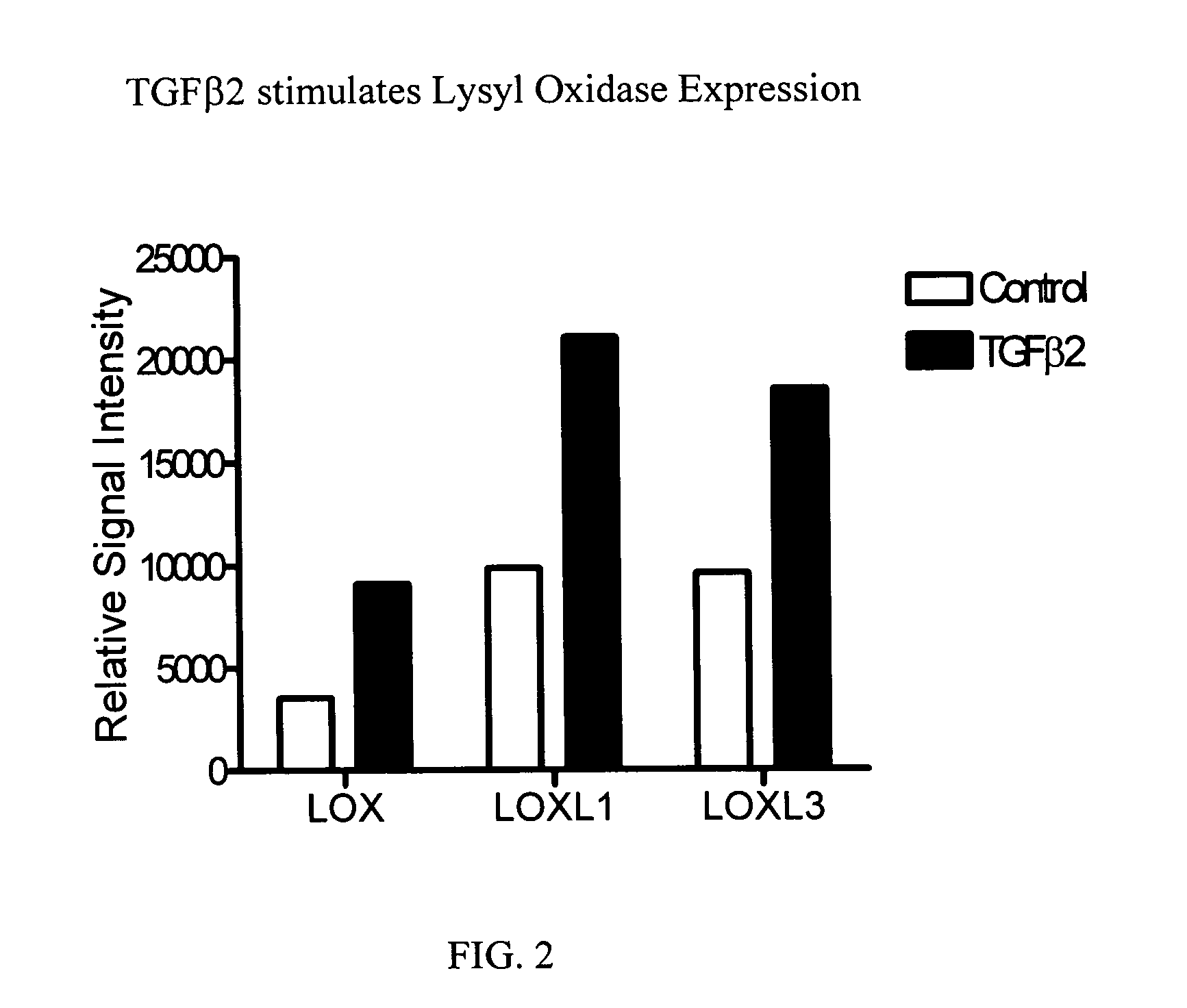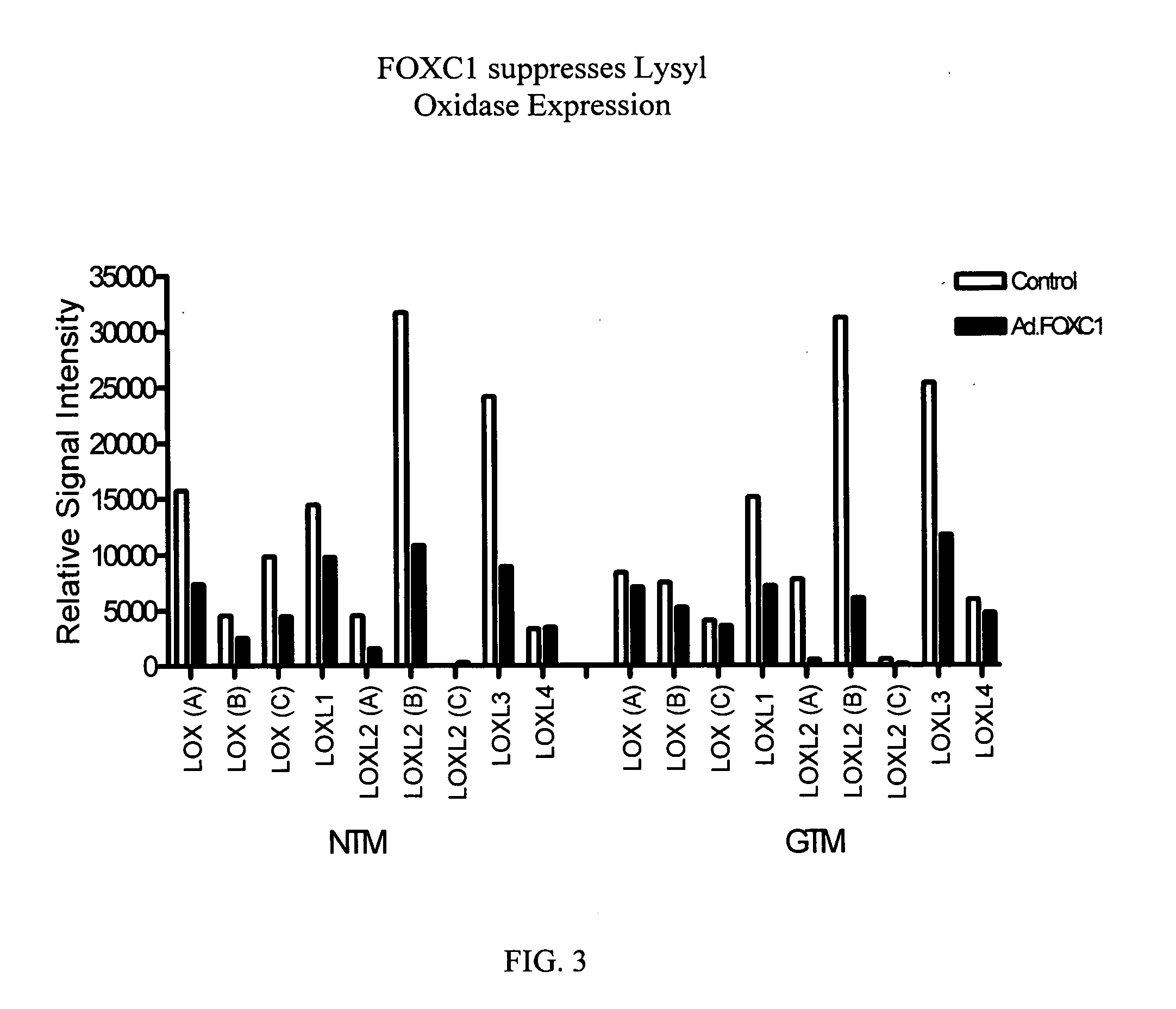Agents which regulate, inhibit, or modulate the activity and/or expression of lysyl oxidase (LOX) and LOX-like proteases as a unique means to both lower intraocular pressure and treat glaucomatous retinopathies/optic neuropathies
a technology of lysyl oxidase and lox, which is applied in the field of ocular conditions, can solve the problems of progressive visual loss and blindness, degrading the extracellular matrix of the optic nerve head, and unable to prevent rgc death, so as to reduce intraocular pressure, inhibit expression and/or signaling, and reduce the effect of intraocular pressur
- Summary
- Abstract
- Description
- Claims
- Application Information
AI Technical Summary
Benefits of technology
Problems solved by technology
Method used
Image
Examples
Embodiment Construction
[0020] Glaucoma is a heterogeneous group of optic neuropathies that share certain clinical features. The loss of vision in glaucoma is due to the selective death of retinal ganglion cells in the neural retina that is clinically diagnosed by characteristic changes in the visual field, nerve fiber layer defects, and a progressive cupping of the ONH. One of the main risk factors for the development of glaucoma is the presence of ocular hypertension (elevated intraocular pressure, IOP). IOP also appears to be involved in the pathogenesis of normal tension glaucoma where patients have what is often considered to be normal IOP. The elevated IOP associated with glaucoma is due to elevated aqueous humor outflow resistance in the trabecular meshwork (TM), a small specialized tissue located in the iris-comeal angle of the ocular anterior chamber. Glaucomatous changes to the TM include a loss in TM cells and the deposition and accumulation of extracellular debris including plaque-like material...
PUM
| Property | Measurement | Unit |
|---|---|---|
| Fraction | aaaaa | aaaaa |
| Fraction | aaaaa | aaaaa |
| Fraction | aaaaa | aaaaa |
Abstract
Description
Claims
Application Information
 Login to View More
Login to View More - R&D
- Intellectual Property
- Life Sciences
- Materials
- Tech Scout
- Unparalleled Data Quality
- Higher Quality Content
- 60% Fewer Hallucinations
Browse by: Latest US Patents, China's latest patents, Technical Efficacy Thesaurus, Application Domain, Technology Topic, Popular Technical Reports.
© 2025 PatSnap. All rights reserved.Legal|Privacy policy|Modern Slavery Act Transparency Statement|Sitemap|About US| Contact US: help@patsnap.com



